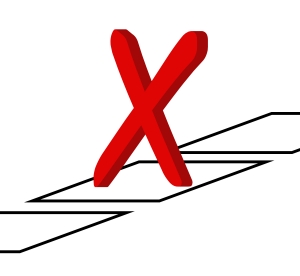Login to your Account
Reconnect with your lost relatives and friends through the voters roll.
 The electoral roll or the voters roll is a list of the eligible voters belonging to a specific area. Being on the voters roll is important because it is mandatory for being able to vote in the elections. Additionally, having your name in the electoral roll casts a positive influence on your credit rating. Even if you pay council tax, you are not automatically enrolled on the voters roll. You have to register yourself to have your name included in the electoral registers.
The electoral roll or the voters roll is a list of the eligible voters belonging to a specific area. Being on the voters roll is important because it is mandatory for being able to vote in the elections. Additionally, having your name in the electoral roll casts a positive influence on your credit rating. Even if you pay council tax, you are not automatically enrolled on the voters roll. You have to register yourself to have your name included in the electoral registers.
Development of voters roll over the years
The study of the voters roll (also called electoral register) created over time, underlines how the right to vote was gradually expanded to embrace a larger population of the UK.
Though electoral registers have been required by law since 1832, they were preceded by Poll books that existed since medieval times. These records documented only the names of those who voted in the elections and the ones for whom they voted. Some Poll books recorded the occupations and the addresses of the voters too. Remarkably, Poll books did not include the names of those who were eligible to vote but did not exercise their voting rights in the elections. Poll books remained in use until 1832 when secret balloting was brought about.
The year 1832 holds a major position in the British electoral history as it saw the enactment of The Representation of the People Act. The act tried to make the electoral system more just. Electoral registers were introduced. Only those people whose names appeared in these registers were allowed to vote . The right to vote was strictly restricted for the male population who held a certain amount of property. Women were not eligible to vote. The number of eligible voters was a little less than 1 million in 1857.
25 years after the electoral registers were introduced, the number of eligible voters had reached 1.2 million. In retrospect, the figure appears dramatically low as the overall population was 28 million. The number of eligible voters reached 1.5 million in 1867 when the Representation of People Act was brought about. It provided eligibility to a larger segment of the male population in the boroughs.
1869 saw unmarried women having their names entered in the electoral registers for the first time. Unfortunately, their right to vote was restricted to only voting in local elections. In 1872 Poll books became obsolete as secret balloting was adopted. Electoral registers were introduced. In 1878 the electoral registers for municipal elections and parliamentary elections were combined. In 1884 the right to vote was further stretched to include more male population through The Representation of people Act. The distinction between the County and Borough was scrapped. The electoral registers saw an addition of around 6 million eligible men.
However, the right to vote was available to only one member per household.
In 1918 the Representation of the People Act gave right to vote in governmental elections to women who were above 30 years old and had some qualifications like ownership or tenancy of lands and university graduation. 8,479,156 women were enrolled in the electoral registers. In 1928 all adults, male and female who were above 21 years old got the right to vote. In 1971 the voting age was lowered to 18 years.

